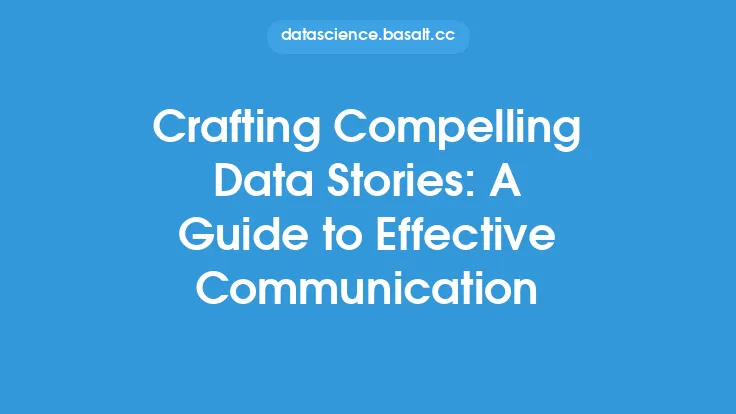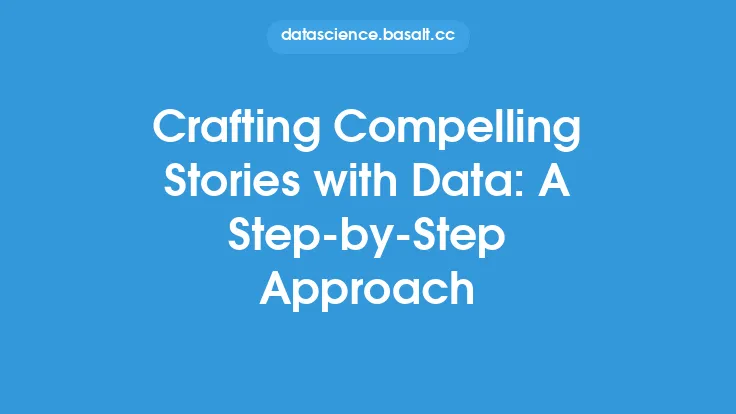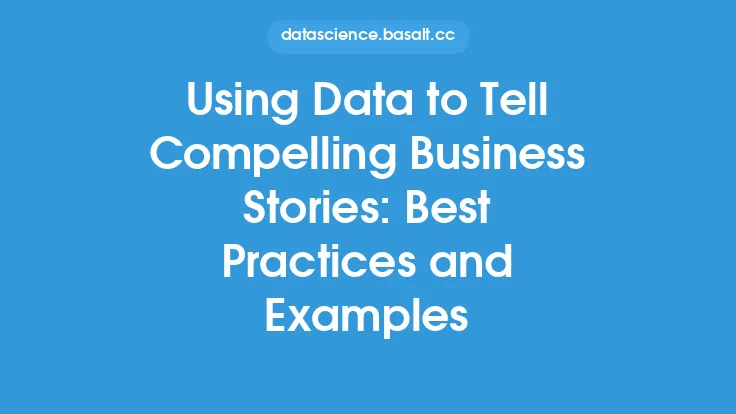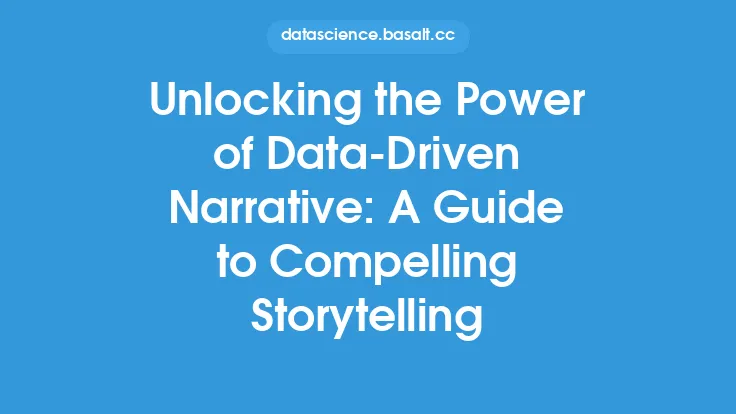Crafting compelling data stories is a crucial aspect of effective communication in the field of data science. It involves presenting complex data insights in a clear, concise, and engaging manner, allowing stakeholders to understand and make informed decisions based on the information. To achieve this, it's essential to have a deep understanding of the audience, the data, and the story being told.
Understanding the Audience
The first step in crafting a compelling data story is to understand the audience. This involves identifying the stakeholders, their level of technical expertise, and their interests. By knowing who the audience is, data scientists can tailor the story to their needs, using language and terminology that resonates with them. For instance, when presenting to a non-technical audience, it's essential to avoid using technical jargon and focus on the key insights and recommendations. On the other hand, when presenting to a technical audience, data scientists can dive deeper into the methodology and technical details.
Preparing the Data
Once the audience is understood, the next step is to prepare the data. This involves collecting, cleaning, and processing the data to ensure it's accurate, complete, and relevant to the story being told. Data scientists should also consider the data sources, ensuring that they are credible and reliable. Additionally, it's essential to handle missing data, outliers, and other data quality issues that can impact the accuracy of the insights. By preparing the data carefully, data scientists can ensure that the story is built on a solid foundation, and the insights are trustworthy.
Identifying the Key Insights
With the data prepared, the next step is to identify the key insights. This involves analyzing the data, using statistical and machine learning techniques to uncover patterns, trends, and correlations. Data scientists should also consider the business context, ensuring that the insights are relevant and actionable. By identifying the key insights, data scientists can create a clear and concise narrative that resonates with the audience. For example, when analyzing customer purchase behavior, data scientists may identify insights such as demographic trends, purchase frequency, and product preferences.
Creating a Clear and Concise Narrative
Creating a clear and concise narrative is critical to crafting a compelling data story. This involves using simple, intuitive language to explain complex concepts, avoiding technical jargon and focusing on the key insights and recommendations. Data scientists should also use storytelling techniques, such as setting the scene, building tension, and resolving the story, to engage the audience and make the story more memorable. Additionally, using analogies and metaphors can help to explain complex concepts in a more accessible way. For instance, when explaining a complex machine learning algorithm, data scientists can use an analogy such as a recommendation engine to help the audience understand how it works.
Using Data Visualization Effectively
Data visualization is a powerful tool for communicating complex data insights. By using charts, graphs, and other visualizations, data scientists can present the data in a clear and concise manner, making it easier for the audience to understand. However, it's essential to use data visualization effectively, avoiding clutter and ensuring that the visualizations are intuitive and easy to interpret. Data scientists should also consider the type of visualization to use, depending on the data and the story being told. For example, when presenting time-series data, a line chart or area chart may be more effective, while a bar chart or scatter plot may be more suitable for categorical data.
Refining the Story
Refining the story is an iterative process that involves testing and refining the narrative, ensuring that it resonates with the audience. Data scientists should solicit feedback from stakeholders, using it to refine the story and make it more engaging. Additionally, practicing the presentation, using storytelling techniques such as pacing, tone, and body language, can help to deliver the story more effectively. By refining the story, data scientists can ensure that the insights are communicated clearly and concisely, and that the audience is engaged and informed.
Measuring the Impact
Finally, measuring the impact of the data story is essential to understanding its effectiveness. This involves tracking key metrics, such as engagement, comprehension, and decision-making, to determine whether the story has achieved its intended goals. Data scientists should also solicit feedback from stakeholders, using it to refine the story and make it more effective. By measuring the impact, data scientists can ensure that the insights are communicated effectively, and that the audience is informed and engaged.
Best Practices for Crafting Compelling Data Stories
To craft compelling data stories, data scientists should follow best practices such as:
- Knowing the audience and tailoring the story to their needs
- Preparing the data carefully to ensure accuracy and relevance
- Identifying the key insights and creating a clear and concise narrative
- Using data visualization effectively to present complex data insights
- Refining the story through feedback and practice
- Measuring the impact to determine effectiveness
By following these best practices, data scientists can craft compelling data stories that engage and inform the audience, driving business decisions and outcomes. Whether presenting to a non-technical or technical audience, data scientists can use these techniques to communicate complex data insights in a clear, concise, and engaging manner.





